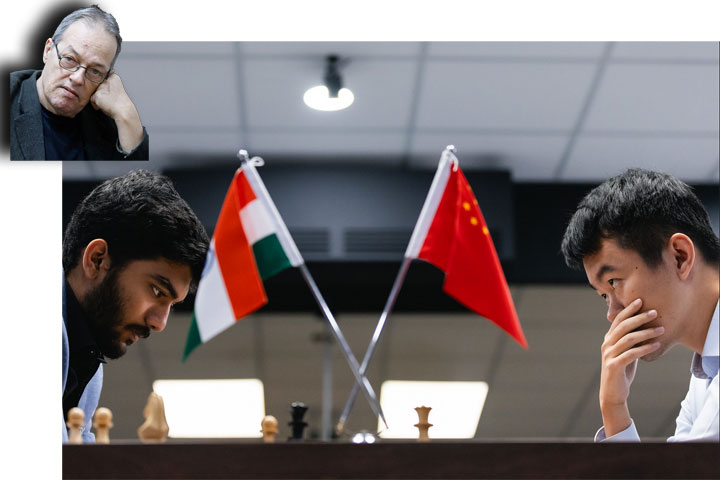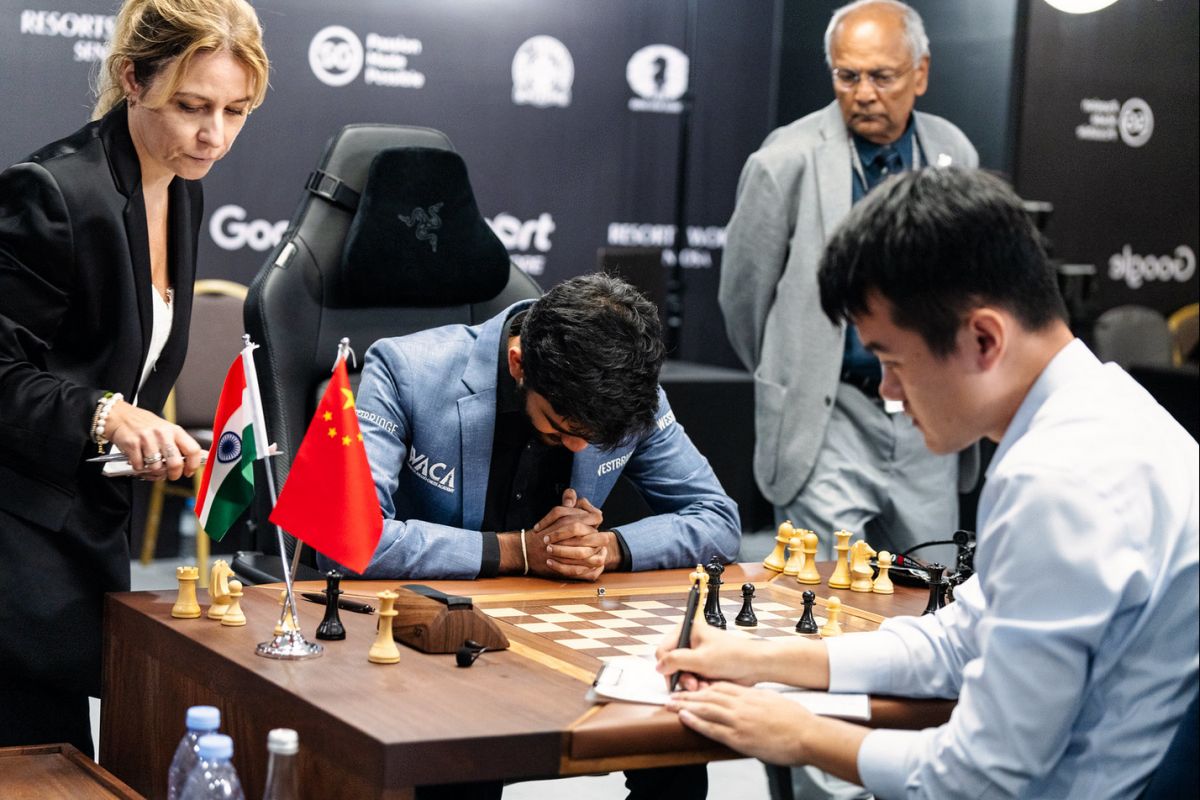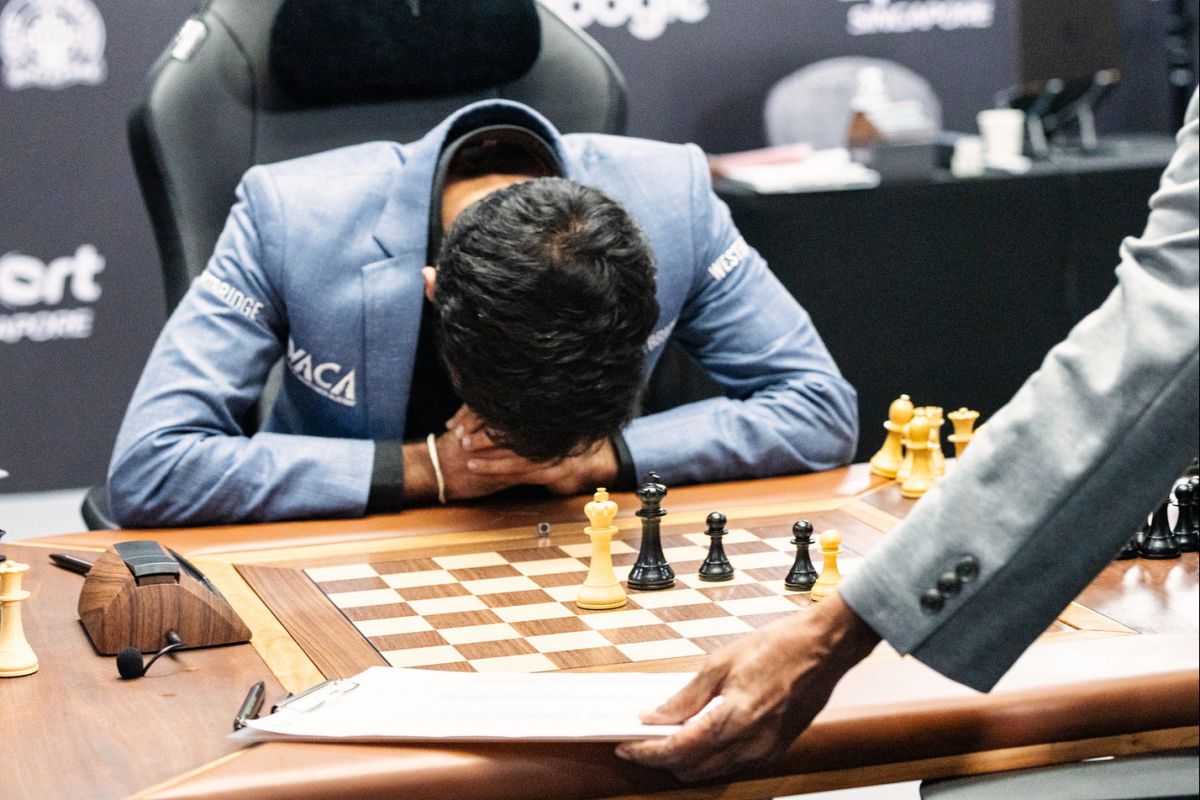


A strange game, where Gukesh came early with new ideas and after some inaccuracies from his opponent, got some really good chances to prevail. But, as happened already in some of the previous games, Ding escaped some difficult moments, and in the end he had no real troubles to secure the draw. Especially the missing chance in the 31st move, will be remembered, as Gukesh could gain a large advantage and probably a material one soon, which could bring him very close to the world title. But after he missed it, Ding played with accuracy, giving his opponent no more chances to hope for than something more than a draw.

The players at the press conference. Photos by Eric Rosen
It seems that the young challenger is lacking some important qualities; in other words it might be said that he is hardly mature for the world title. Patience and concrete decision-making should be the main missing qualities, but of course, nobody can underestimate the great tension by playing for the world title!
The last classical game of the match for the FIDE World Championship 2024 started well for Ding. After a reversed opening (a case so often met in this match), White seemed to be doing okay, but it was ‘obvious’ that Ding was lacking the necessary energy to press his opponent. Gukesh got a fine position, where Ding even gave a pawn, to reach a drawn ending. But suddenly he blundered in this equal position, handing his opponent the FIDE World Champion title!

Ding blunders has in game 14, and resigns...

Gukesh cannot believe it. He is the new World Champion! [Photos Maria Emelianova]
I can even recall that something similar happened back in 2010, when Topalov lost the last game of the FIDE World Championship 2010 (with the white pieces as well!) to Anand, in a more or less equal position!
Watch the reaction of the players and of the online spectators.
There are scores of video streams on YouTube showing and discussing the final game.
| Advertising |